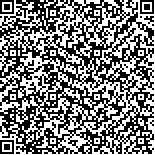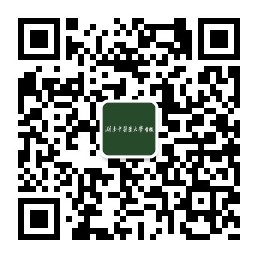| 引用本文: |
金义羚, 龚艳, 顾一鸣.针刺次髎穴联合TMS刺激尾骶部用于治疗脊髓损伤后排便障碍的研究[J].湖南中医药大学学报,2024,44(11):2073-2077[点击复制] |
|
| |
|
|
| 本文已被:浏览 1527次 下载 746次 |
| 针刺次髎穴联合TMS刺激尾骶部用于治疗脊髓损伤后排便障碍的研究 |
| 金义羚,龚艳,顾一鸣 |
| (苏州市立医院(南京医科大学附属苏州医院)针灸理疗科, 江苏 苏州 215000;苏州市立医院(南京医科大学附属苏州医院)康复科, 江苏 苏州 215000) |
| 摘要: |
| 目的 探讨应用针刺次髎穴联合经颅磁刺激(transcranial magnetic stimulation, TMS)治疗脊髓损伤后排便障碍的效果。方法 选择苏州市立医院南京医科大学附属苏州医院2021年1月至2023年6月收治的80例脊髓损伤后排便障碍患者,采用随机数字表法分成观察组(n=40)、对照组(n=40)。对照组采取肠道排便护理及TMS刺激尾骶部治疗,观察组在对照组的基础上予针刺次髎穴治疗,均治疗1个月。对比两组患者治疗前与治疗1个月后排便功能,Glazer表面肌电指标[连续5次快速收缩最大值(flick-max, Fmax)、持续60 s收缩平均值(edu-mean, E-Mean)],负性情绪[焦虑自评量表(self-rating anxiety scale, SAS)、抑郁自评量表(self-rating depression Scale, SDS)]变化。结果 与治疗前比较,两组患者治疗后排便功能评分、SAS评分、SDS评分均降低,且观察组患者排便功能评分、SAS评分、SDS评分均低于对照组(P<0.05);与治疗前相比,两组患者治疗后Fmax、E-Mean水平均升高,且观察组高于对照组(P<0.05)。结论 针刺次髎穴联合TMS刺激尾骶部治疗脊髓损伤后出现的排便障碍患者,能有效提升患者的排便功能,并减轻患者不适情绪。 |
| 关键词: 脊髓损伤 排便障碍 针刺 次髎穴 经颅磁刺激 尾骶部 |
| DOI:10.3969/j.issn.1674-070X.2024.11.019 |
| 投稿时间:2024-07-04 |
| 基金项目:江苏省中医药管理局科技项目(YB202123);苏州市姑苏卫生人才计划(GSWS2022073)。 |
|
| Treatment of defecation disorders after spinal cord injury with acupuncture at Ciliao point combined with sacrococcygeal TMS |
| JIN Yiling, GONG Yan, GU Yiming |
| (Department of Acupuncture and Physiotherapy, Suzhou Municipal Hospital (The Affiliated Suzhou Hospital of Nanjing Medical University), Suzhou, Jiangsu 215000, China;Department of Rehabilitation, Suzhou Municipal Hospital (The Affiliated Suzhou Hospital of Nanjing Medical University), Suzhou, Jiangsu 215000, China) |
| Abstract: |
| Objective To investigate the therapeutic effects of acupuncture at Ciliao point (BL32) combined with transcranial magnetic stimulation (TMS) of the sacrococcygeal region on defecation disorders after spinal cord injury. Methods A total of 80 patients with defecation disorders after spinal cord injury admitted to Suzhou Municipal Hospital, the Affiliated Suzhou Hospital of Nanjing Medical University, from January 2021 to June 2023 were selected and divided into observation group (n=40) and control group (n=40) by random number table method. The control group was treated with intestinal defecation nursing and sacrococcygeal TMS; the observation group was treated with acupuncture at Ciliao point (BL32) in addition to the control group treatment. Both groups were treated for 1 month. The defecation function, Glazer surface electromyography indicators [maximum value of five consecutive rapid contractions (flick-max, Fmax) and average value of a 60-second sustained contraction (edu-mean, E-Mean)], and negative emotions [self-rating anxiety scale (SAS) and self-rating depression scale (SDS)] were compared between the two groups before treatment and one month after treatment. Results Compared with before treatment, the defecation function scores, SAS scores, and SDS scores of both groups decreased after treatment, and the defecation function scores, SAS score, and SDS score of the observation group were lower than those of the control group (P<0.05). Compared with before treatment, Fmax and E-Mean levels in both groups increased after treatment, and those of the observation group were significantly higher than those of the control group (P<0.05). Conclusion Acupuncture at Ciliao point (BL32) combined with sacrococcygeal TMS can effectively improve the defecation function of patients with defecation disorders after spinal cord injury, and reduce the discomfort of patients. |
| Key words: spinal cord injury defecation disorders acupuncture Ciliao point (BL32) transcranial magnetic stimulation sacrococcygeal region |
|

二维码(扫一下试试看!) |
|
|
|
|




